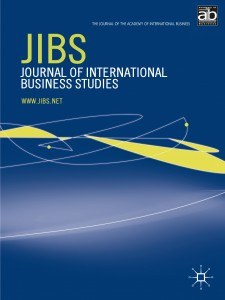
Zhou, C. and \Van Witteloostuijn\, A. (2010). Institutional constraints and ecological processes: Evolution of foreign-invested enterprises in the Chinese construction industry, 1993-2006 Journal of International Business Studies, 41(3):539--556.
-
Affiliated author
-
Publication year2010
-
JournalJournal of International Business Studies
In the current study, expansion of foreign investment in transition economies such as China is analyzed as an organizational selection process in a community ecology setting. Insights from organizational ecology are used to explain how institutional forces constrain ecological processes, together driving the evolution of the population size of foreign-invested enterprises (FIEs), privately held domestic firms, and state-owned domestic organizations. We argue that the variation in the relative forces of ecological processes and institutional constraints across FIEs and their domestic rivals accounts for the expansion of FIEs in China. On the one hand, in many transition economies, institutional constraints are imposed on foreign enterprises by regulation that limits FDI opportunities. On the other hand, after entry, foreign enterprises can benefit from their competitive advantages in their ecological struggle against domestic rivals. This logic produces different sets of hypotheses as to foreign enterprises density and sales growth, in interaction with domestic organizations. Using a data set of the Chinese construction industry in 29 provinces over the 1993-2006 period, estimation of a partial adjustment growth model produces support for our theoretical claim.